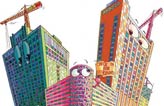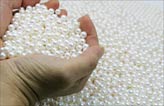China-US
Modern appeal of Chinatown in L.A
Updated: 2011-06-01 11:26
(Xinhua)
Los Angeles -- If you ever visit the Los Angeles area, you may have on your to-do list a visit to Chinatown, not far away from the central Dodger Stadium.
You may take a photo outside the Foo Chow Restaurant, where parts of Rush Hour were filmed, and wander in and out of the many sidewalk stores known for their dollar trinkets, looking for a few pieces of well-priced souvenir jewelry to take home.
Unknowingly, you may overlook the nightlife that transforms this little village after dark, or the new art galleries that are modernizing Chinatown, which dates back to the 1850s.
Home to one of the largest Chinese communities in the Unite States, Los Angeles has a Chinese population of about half a million, according to the 2009 American Community Survey.
Chinatown has been a viable option for tourists and locals alike to get to know the Asian country, now with a fast expanding economy and an increasingly stronger international impact.
"Old" Chinatown, as Los Angeles residents call it ever so slightly, has recently begun to carve itself out as a distinct nighttime destination for the younger generation.
Hours after the storefronts close their doors, the scattered bars and music lounges welcome in a new generation to Chinatown. A generation of mixed cultural and ethnic backgrounds venture to the area to listen to live music at places like the Grand Star Jazz Club and Mountain Bar.
"The nightlife is really helping to attract more Americans," said Jevon Lam, 27, a frequent visitor to Chinatown. "It's amped up the presence of more people my age. This place used to be dead after 4:30 p.m. Nowadays there are things happening until two in the morning."
Along with a revitalized nightlife scene, Old Chinatown is fast becoming home to more and more art galleries, many of which host openings in the evenings.
Chasidy Conry, manager at the trendy Realm Home, has seen first-hand how the changes have affected the area. "The art galleries began moving in five years ago," she said.
"Since then, the foot traffic has visibly increased. There are now boutique shops like Realm, not just dollar shops. Most people come here for the trinkets, not expecting a store like ours. It's a nice surprise for them when they realize that there're also stores that carry unique and higher quality products."
As with most cities, there is always room for improvement, and Old Chinatown is no exception. "New activities must be brought here," said Karen Kan, owner of K&A Company Gift Shop in Old Chinatown.
"Not only for more foot traffic, but to bring more meaning to the Chinese culture. There is a Chinese New Year parade that happens once a year, and that brings many outsiders into our area. Activities like that educate them. They should happen much more than once a year."
A NEW CHINATOWN
In fact, if you ask for directions to Chinatown in Los Angeles, you may be asked which one you would like to go to -- Old or New? For in the past 20 years, another hub for Chinese culture has emerged in nearby San Gabriel Valley, about 16 km east of Old Chinatown.
Often referred to as "New Chinatown" by locals, one shouldn't expect to venture there and find the same scene that is found at Old Chinatown.
"New Chinatown doesn't sell traditional Chinese products," said Kan of K&A Company Gift Shop in Old Chinatown. "It's more Americanized. It's much more unique there. You can't just go to the malls and buy the kinds of things we sell."
Joanne Zhang, 26, who grew up in the San Gabriel Valley, said New Chinatown is known to have a large variety of authentic Chinese food influenced by the many provinces in China.
"In New Chinatown, there is little need for the residents to go to Old Chinatown because New Chinatown is modern and self-sufficient. There are Chinese restaurants, stores, DVD shops, hotels, traditional herb stores, and supermarkets," he said.
Kan agreed that as a place to live, New Chinatown is more viable. "People prefer to live in New Chinatown," she said.
"There are more people, more modern stores. Old Chinatown is much more touristy. It's the traditional version of Chinese Culture, while New Chinatown is the modern version," she added.
As Old Chinatown stays largely the same in its scale, New Chinatown has expanded as the recent immigrant population has increased.
"Current trends seen in Asia will pop up in New Chinatown to attract business. New Chinatown is growing whereas Old Chinatown does not continue to expand," said Zhang.
Yet for all its expansion, Zhang shared a sentiment that New Chinatown should do more to attract those not familiar with the Chinese culture.
"It would be helpful if New Chinatown had a tourism center to introduce non-Chinese speaking visitors to the different restaurants and stores. Currently, outsiders are typically introduced to the area by friends who are locals, as opposed to finding out about it themselves," she said.
It seems one could write a book on both the merits and faults of both sub-cities. But what is less debatable and more tangible is the pride in the Chinese culture that exudes from the locals of both Chinatowns.
Conry, the manager of Realm Home, said she loves Old Chinatown for its ability to bring Eastern and Western cultures together. "No other place can happen like that in Los Angeles."
Even though she is not of Chinese descent, she takes pride in engulfing herself in their culture as she works, stopping at her favorite local bakeries for their sponge cakes and tarts, and enjoying the view her store affords her of the more elderly locals playing mahjong outside in the courtyard.
"You really get a strong sense of culture," she said.
Specials

China Daily marks 30th birthday
China's national English language newspaper aims for a top-notch international all-media group.

Room at the inn
The Chinese hotel industry experiences a building boom, prompting fears of oversupply.

Pearls of wisdom
Chinese pearl farmers dominate the world market but now want to work smarter, not harder